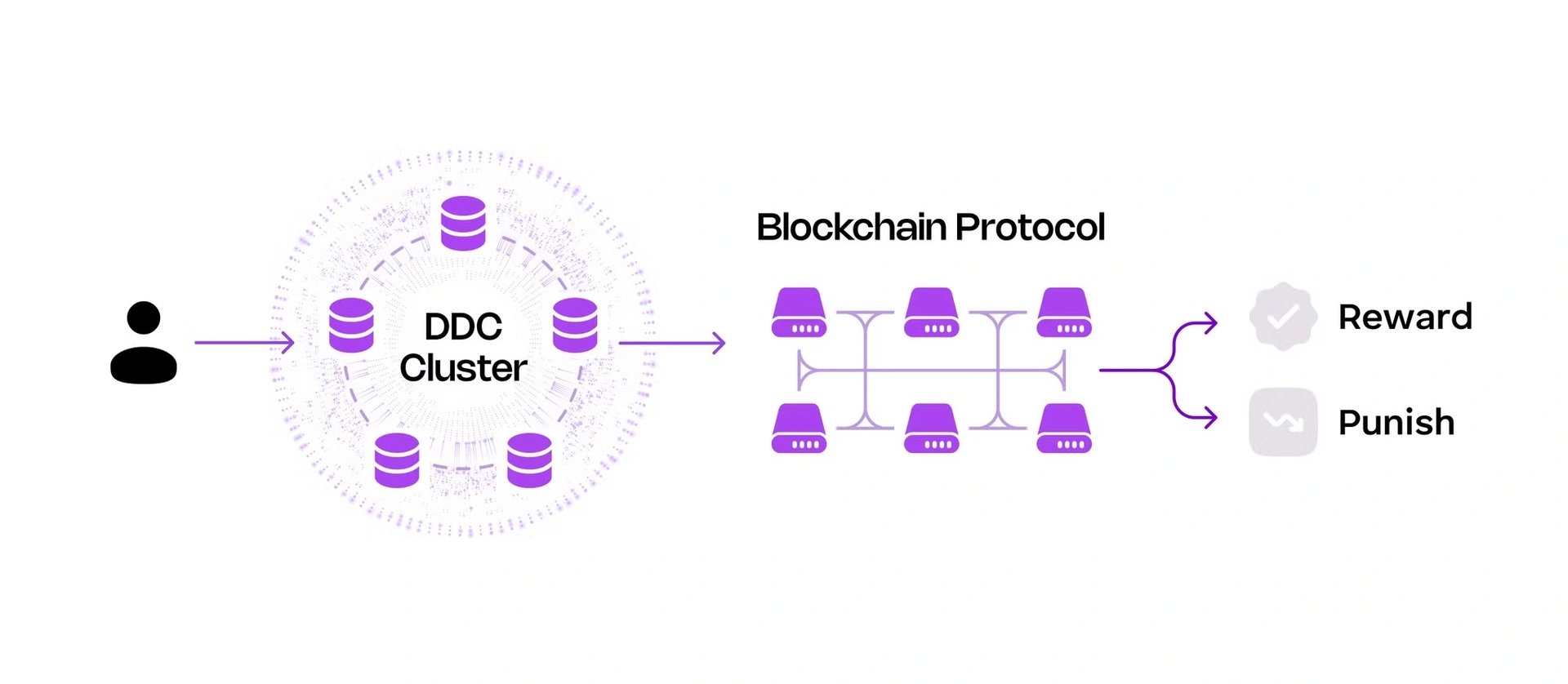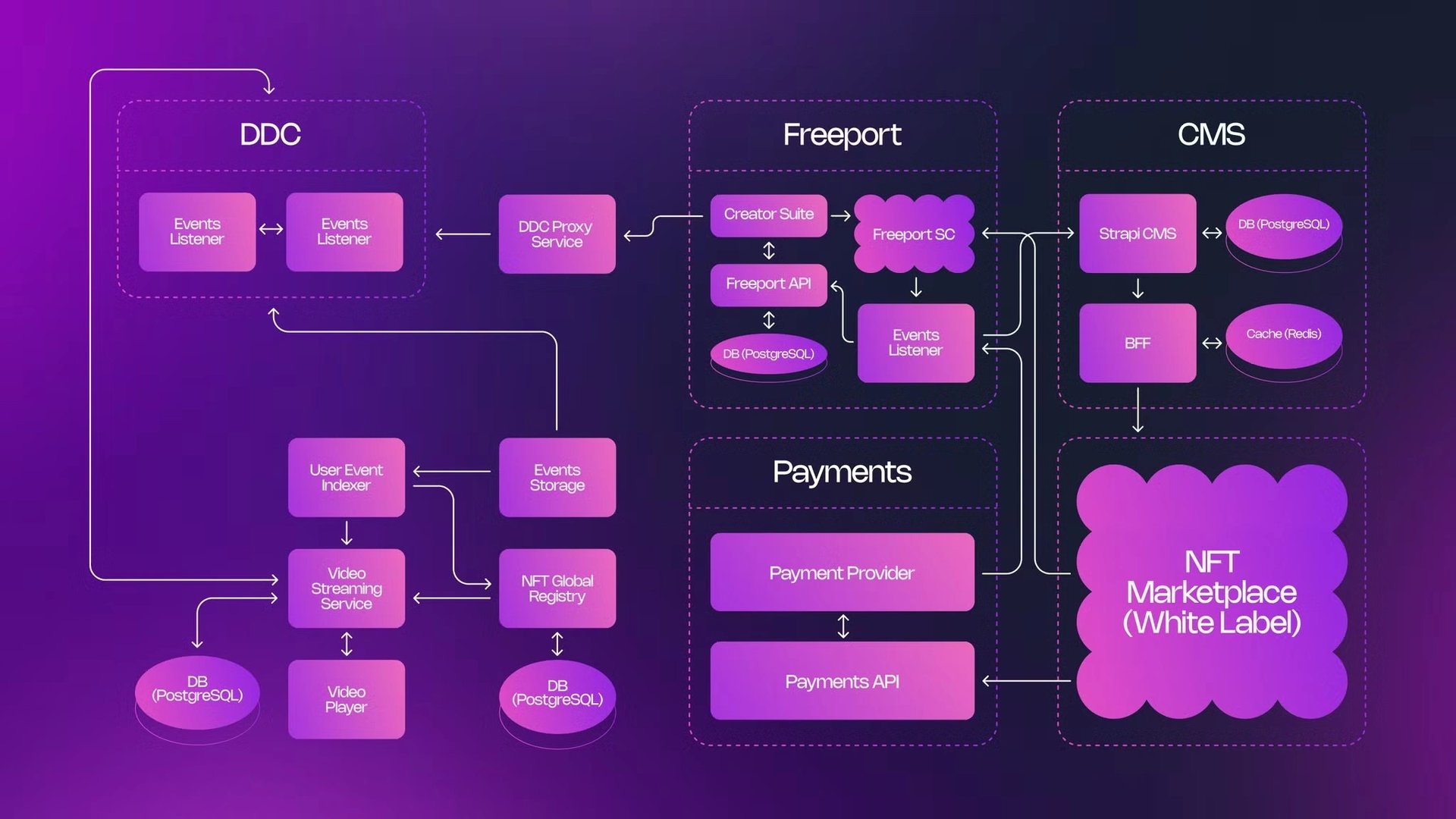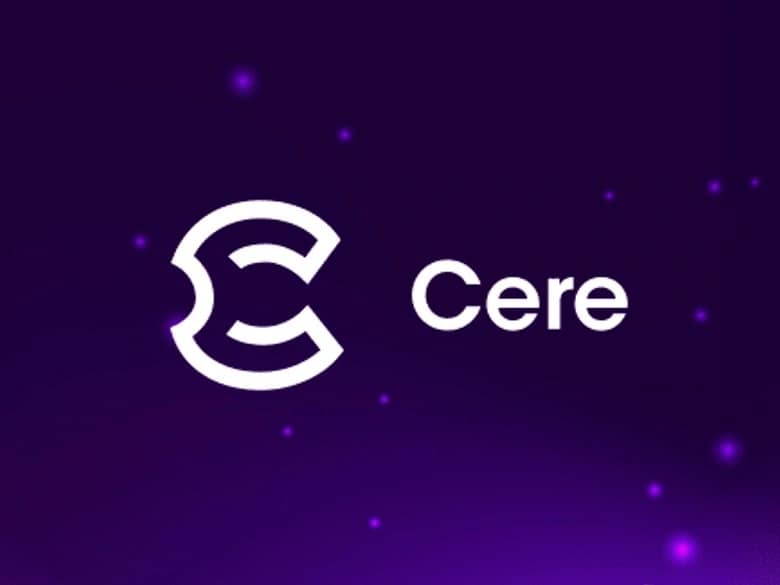订阅 wiki
Share wiki
Bookmark
Cere Network
Cere Network
Cere Network 是一个区块链平台,它将数据云服务去中心化,并提供可扩展、安全的业务基础设施。它的目标是通过提供去中心化数据存储、安全数据交换以及与其他网络的互操作性,来弥合企业需求与区块链技术之间的差距。 [1]
概述
Cere是一个去中心化数据云(DDC)平台,由币安实验室支持,提供与币安智能链、Polkadot、Cosmos和以太坊等网络的跨链兼容性。它专注于通过改善协作、数据敏捷性、集成、隐私和用户所有权,将企业公司与去中心化生态系统连接起来。Cere与Polkadot和Cosmos等项目组成联盟,促进跨链互操作性,为企业创建一个可扩展的去中心化生态系统,使企业能够将其现有应用程序与实时数据和分析集成。[2][3]
Cere的Layer-1区块链将企业链与去中心化的公共网络连接起来,支持专注于完全去中心化的消费者企业服务。Cere通过用户友好的API和SDK,将SaaS实践与区块链技术相结合,简化了支付、钱包注册和交易费用等复杂流程。其目标是推动去中心化网络的大规模企业采用。[2][3]
功能
区块链共识
Cere 采用与 Polkadot 和 Cosmos 等项目的互操作性理念相一致的方法。它旨在实现一个互连 区块链 网络优先于单一主导链的未来。Cere 专注于解决企业对隐私、可扩展性和可用性的需求,同时致力于与去中心化网络兼容,以增强互操作性。 [2][12]
Cere 使用快速的 拜占庭容错 (BFT) 共识 框架,与 Polkadot 和 Cosmos 兼容,并结合了基于 WebAssembly (WASM) 的 智能合约,从而支持 Rust 和 Solidity 等语言。通过利用 Substrate 的功能,Cere 能够实现 区块链 之间灵活且可定制的状态转换。网络的 权益证明 BFT 算法将生成并最终确定区块,长期 CERE 代币 质押者 将获得区块奖励。Cere 与 Substrate 的集成提供了对其广泛工具和模块的访问,这些工具和模块适用于企业要求的常见 区块链 功能。 [2][12]
去中心化数据云 (DDC)
Cere 去中心化数据云 (DDC) 允许利益相关者完全控制他们的数据,决定数据的使用方式和使用者。Cere 核心网络区块链通过身份抽象技术促进无缝的客户加入,确保数据隐私。用户通过自动创建的加密钱包轻松集成到生态系统中,使品牌能够探索客户数据管理 (CDM) 和客户数据平台 (CDP) 用例。这种设置支持高效的价值转移、增强的用户体验以及在无需信任且合规的环境中进行业务开发。该平台还提供跨旅游、游戏和零售等各个行业管理优惠券、代金券和忠诚度积分等数字资产的机会。 [2][4]
去中心化数据集群
Cere的去中心化数据集群(DDC)是由智能合约管理的自动化数据市场。这些集群根据特定行业和区域的需求定制,节点提供商贡献闲置资源以支持数据存储和处理。数据被积极用于各种应用,包括游戏会话、AI交互和去中心化应用(dApp)的集成。该系统有效地平衡了Cere生态系统内的供需关系。[4]
与提供通用解决方案的中心化系统不同,DDC集群的设计具有灵活性,允许行业和区域特定的定制。通过利用机器中未充分利用的资源,Cere提高了经济效率并促进了成本节约。DDC集群的去中心化结构通过减少单点故障来增强安全性和隐私,数据经过加密和匿名化处理。Cere的开放生态系统鼓励创新和协作,不受专有系统的限制。它确保用户不会被锁定在单一服务提供商中,从而更好地控制数据管理。[4]

SaaS-DeFi
在去中心化金融(DeFi)中,企业B2B资产和负债的金融化被视为零售业扩张接近极限后的一个合乎逻辑的进展。通过将已接入Cere SaaS平台的企业现金流和资产与DeFi生态系统连接,Cere的SaaS-DeFi计划使企业能够更有效地利用闲置资本,优化财务运营,并创建无缝的支付体验,从而利用DeFi的流动性。Cere的SaaS-DeFi桥梁促进了企业对新金融工具的采用,实现了企业SaaS市场、供应商协作、应收账款杠杆化、直接企业或消费者支付、奖励质押、通过DEX/桥梁进行资产转换以及在DeFi领域内进行借贷等用例。 [2][5]
产品
Dragon1
Dragon1 是一个由完全去中心化的 区块链 协议驱动的 Web3 数据云集群,为传统大型科技云服务提供替代方案。在公开测试阶段,它为开发者提供去中心化内容流媒体和注重隐私的数据解决方案工具。Dragon1 引入了一种开放治理模式,允许 $CERE 代币持有者对去中心化数据集群运营进行投票,使其比 Filecoin 等同类平台更去中心化。Dragon1 的架构针对边缘计算进行了优化,从而改善了实时数据处理,减少了延迟,并提供了支持人工智能的基础设施。在负载测试中,Dragon1 的性能优于中心化云服务,延迟明显低于 Google 和 Amazon CloudFront 等主要提供商。该平台还强调通过直观的 SDK 简化 Web3 开发者入门流程,使开发者更容易集成媒体流媒体和人工智能工具等应用程序。Cere 旨在通过构建端到端边缘数据计算解决方案来满足数据隐私和安全计算需求,尤其是在人工智能领域。 [6]
Cere AI
Cere AI 专为实际应用而设计,超越了典型的聊天机器人和客户服务工具。集成到实时体验构建器 (RXB) 等系统中,Cere AI 可以提供预测性解决方案,例如在交通拥堵发生前缓解。它根据用户偏好和数据提供个性化推荐和见解,同时保护隐私。Cere AI 允许多个 AI 代理实时协作处理相同的数据,从而增强它们的集体能力。例如,AI 代理可以一起分析视频文件,提取诸如计算人和汽车数量等见解,而不会损害数据安全。 [7]
Cere Wallet
Cere钱包是Cere生态系统的关键组成部分,允许用户与去中心化数据网络(DDN)和主网 区块链进行交互。它支持NFT和加密资产的管理,并与Freeport NFT体验、市场和Cere 区块链集成。该钱包让用户可以独立于特定设备或平台控制其内容。它还与Cere Identity集成,以增强与第三方应用程序的交互,同时其与Cere去中心化数据云的连接为用户提供了对其内容的真正所有权。 [8]

Freeport
Freeport Creator Suite旨在利用Web3技术和Cere的去中心化数据云生成数字内容。它使创作者和开发者无需编码即可制作和管理各种类型的内容,如图像、视频和游戏。Freeport是客户端和去中心化数据云之间的中介,促进数据交互,并提供与CerePlan、CereFans和市场的集成。它适用于诸如代币铸造、配置版税和管理拍卖等任务,而游戏开发者和内容所有者可以轻松上传和配置内容以获得最佳使用效果。 [9]

Cere Marketplace
Cere Marketplace是一个现成的平台,使创作者和开发者能够向他们的社区提供数字资产。它支持各种用途,例如启动数字艺术展览、分享独家内容或集成游戏内市场,为分发和管理数字资产提供灵活的解决方案。 [10]
Cere视频流
Cere视频流提供了一个去中心化且可靠的视频内容传输系统,解决了中心化平台常见的诸多问题。它利用Cere区块链、去中心化数据云(DDC)和媒体SDK,确保在全球范围内实现高速、抗审查的流媒体播放。内容创作者可以通过Cere Freeport上传视频,并使用NFT进行访问控制,而消费者可以通过拥有NFT来访问独家内容。应用程序开发者可以将视频上传到存储集群,集成CDN流,并可选择将视频流链接到NFT,从而只允许NFT持有者观看内容。该服务还支持去中心化的视频播放器和标准的HTML 5格式。[11]
CERE
CERE 实用代币 在网络中主要有三个用途:SaaS-DeFi 实用性、权益证明 共识 和网络治理。它通过将代币化与 B2B 交易中的 SaaS 实用性和费用联系起来,以及企业对消费者的支付和价值转移,从而促进企业需求。[2][12]
- SaaS DeFi 实用性:CERE 为去中心化数据云平台、SaaS-DeFi 框架和 Cere 市场提供支持。
- 共识参与:验证者 和 节点 运营商 质押 CERE 代币,并通过维护网络获得额外的代币奖励。
- 网络治理:CERE 代币持有者拥有投票权,可以影响网络的未来发展和运营。
代币经济学
CERE的总供应量为100亿,分配如下:[13]
- 私募轮: 20.9%
- 团队: 18%
- 企业合作伙伴: 9%
- 网络开发: 8.25%
- 赠款: 8%
- 公开发售: 7%
- 顾问: 5%
- 质押奖励: 5%
- 市场营销: 5%
- 基金会: 5%
- 开发者推广: 4.89%
- 公开发售 (A2, A3): 4%
Cere DAO
Cere DAO 代表着迈向去中心化治理的一步,其模式效仿了 MakerDAO 和 Uniswap 等项目。它旨在建立一个透明且包容的治理结构,所有成员都可以决定 Cere 的未来。自 2019 年成立以来,Cere 一直致力于将其控制权分配到整个生态系统中,以防止任何单一实体拥有过度的影响力。该计划在法律指导下制定,概述了实现完全由社区主导的治理结构的路径。 [2][14][15]
Cere 的治理依赖于社区参与,代币持有者可以对关键的网络决策进行投票。这些投票通过 Polkassembly 平台进行,决策由 DAO 的财政库提供资金。该系统强调公平、透明和集体决策。Cere 的网络治理旨在支持各种治理模型,以满足从完全许可到公共或混合配置的企业需求。 [2][14][15]
- 企业治理:企业可以通过 智能合约 为侧链创建自定义 DAO,从而在治理设计方面具有灵活性。
- 共识参与:Cere 代币的 Stakers 参与网络共识,验证者 赚取区块奖励。
- 仲裁:Cere 基金会在企业和网络利益之间进行调解,以确保平衡和可持续的冲突解决。
融资
2019年10月23日,Matic 社区承诺向 Cere Network 的私募投资 170 万美元,超过了最初 10 万美元的目标。Cere 宣布与 Matic Network 建立合作伙伴关系,旨在通过与 Matic 基于 Plasma 的侧链网络集成来增强其去中心化 CRM 解决方案。在九个小时内,Cere 收到了超过 168 份提交,承诺提供超过 1.2 亿个 Matic 代币,价值 170 万美元。[16]
2021 年 9 月 9 日,Cere Network 宣布完成其 2800 万美元的 CERE 代币发行,并获得 Polygon 的 300 万美元投资。这项投资使 Cere 的去中心化数据云 (DDC) 能够与 Polygon 的协议及其现有的 Polkadot 集成。此次 3100 万美元的代币销售由 Republic 牵头,DAO Maker 和 Polkastarter 也提供了额外资金。Republic 平台在发行后的第一个小时内就获得了超过 1 亿美元的需求。Cere Network 得到了 Binance Labs、Fenbushi Capital、Arrington XRP Capital、Republic labs、OKEx、AU21 Capital、Kenetic Capital、NGC Ventures、QCP Capital、Woodstock Fund、JRR Capital、Ledger Prime、G1 Ventures、ZB exchange、Gate.io Exchange、Spark Capital 等机构的支持。[17][18]
合作伙伴
发现错误了吗?
